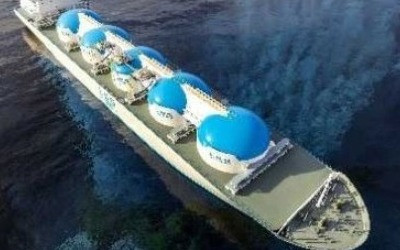December 08, 2022

The transition to renewable energy has given rise to a modern-day mineral rush. Increasing investment in green technology has seen soaring demand for the essential materials that power these systems.
According to the World Bank, production of the planet’s most critical minerals for energy transition will need to grow by 500% over the next 30 years in order to avoid the worst effects of climate change.
Surging demand for these materials presents new challenges to energy security – challenges that can only be solved through the combined efforts of key players from across the supply chain.
The use of critical minerals in renewable energy technology
As with oil refineries and power plants, renewable energy systems are reliant on a wide range of minerals for their construction and continued operation. Generally, these systems require more minerals than their fossil fuel-based counterparts.
According to the IEA, the production of an electric vehicle (EV) calls for approximately six times more minerals than a conventional car. Offshore wind farms need 12 times as many minerals for every megawatt of electricity produced compared to natural gas systems.
Elsewhere, critical minerals can be found in the high-performance motors, batteries and generators that power solar farms and green hydrogen systems. The widespread need for raw materials and required pace of transition means that minerals sourcing must be scaled up significantly.
What critical minerals are needed for the energy transition?
The types of minerals needed to support energy transition vary by technology. Some elements are essential for batteries, while others are especially suited to motors, magnets or electrical wiring. Here, we explore five of the materials in greatest demand.
Copper
Arguably the most important mineral for energy transition, copper can be found in a wide range of clean energy technologies including wind turbines and solar panels as well as the energy infrastructure that stores and transports electricity.
Copper is second only to silver in terms of thermal and electricity conductivity, making the metal especially suited to electrical cabling and wiring. On average, clean energy systems consume around five times more copper than those used in traditional power generation.
Lithium
Lithium is among the minerals currently in highest demand, with supply set to triple between 2021 and 2030. The metal is the key component of lithium-ion batteries, used to power many EVs and energy storage systems.
Light and highly reactive, lithium has a unique ability to store large amounts of energy. However, it’s also finite, has an energy-intensive mining process and can be difficult to recycle. Many challenges lie ahead to scale up and make lithium supply sustainable.
Cobalt
Just like lithium, cobalt is a critical material that’s used widely in rechargeable batteries. Previously, most cobalt had been used in mobile phones and laptops, however this has changed recently with EV batteries now constituting the largest single user of the metal.
The growth of the EV market will see demand for cobalt more than quadruple between 2020 and 2050. It’s hoped that a significant chunk of this demand will be met with recycled cobalt, which, compared to lithium, is easier to extract from used batteries.
Nickel
Nickel is a versatile metal with many applications in renewable energy infrastructure. Like lithium and cobalt, it can be found in lithium-ion batteries, as well as offshore wind farm equipment, green hydrogen electrolysers and geothermal power stations.
The metal’s strong resistance to atmospheric corrosion makes it suitable for use in extreme environments. While geothermal energy is yet to be used on a mass scale, the IEA expects that the renewable energy source will account for up to 80% of nickel demand by 2040.
Rare earth elements
Rare-earth elements (REEs) are a set of seventeen metallic elements that includes the fifteen lanthanides as well as scandium and yttrium. While these metals are actually quite common, they are rarely found in large enough quantities to be extracted economically.
Several rare earths are key to energy transition. These include neodymium, praseodymium, dysprosium and terbium, which are used to manufacture the permanent magnets found in the generators of wind turbines and EVs.
Scaling up the supply of critical minerals
Even under the least ambitious emissions pathway, the supply of critical minerals for the energy transition will need to increase dramatically. Scaling up supply brings several challenges, including resource shortages, trade restrictions and new environmental concerns associated with extraction.
While many minerals already have an established recycling infrastructure, others like lithium are yet to be recycled on a mass scale. In these cases, it’s generally accepted that new mining jobs and projects will be required to meet the immediate needs of the transition.
The demand for these minerals is set to create thousands of new exploration jobs in the short and medium term as secondary production is scaled. Increasing investment in minerals recycling will also generate a large number of jobs in renewable energy.
Beyond the balancing act of primary and secondary production, there are also geopolitical hurdles to overcome. International collaboration between governments and corporations will underpin the transition, with key players working together closely to develop sustainable supply chains.
Only through a holistic approach that considers the combined impact of minerals sourcing on the environment and communities that produce these key materials will it be possible to transition successfully to renewable energy.
Petroplan: supporting the energy transition
We’re proud to play our part in energy transition and stand ready to support employers looking to recruit for a wide range of mining jobs as well as jobs in renewable energy. Contact us today to find out how we can help with your talent acquisition process.






You can also use your social account to sign in. First you need to:
To connect your social account you must Acknowledge the Terms & Conditions and Privacy Policy